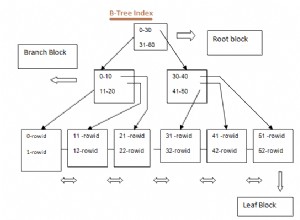Isso é um pouco complicado, mas certamente é possível.
Vamos começar calculando o rumo de um ponto a outro. Dado um ponto de partida, um rumo e uma distância, a seguinte função retornará o ponto de destino:
CREATE FUNCTION [dbo].[func_MoveTowardsPoint](@start_point geography,
@end_point geography,
@distance int) /* Meters */
RETURNS geography
AS
BEGIN
DECLARE @ang_dist float = @distance / 6371000.0; /* Earth's radius */
DECLARE @bearing decimal(18,15);
DECLARE @lat_1 decimal(18,15) = Radians(@start_point.Lat);
DECLARE @lon_1 decimal(18,15) = Radians(@start_point.Long);
DECLARE @lat_2 decimal(18,15) = Radians(@end_point.Lat);
DECLARE @lon_diff decimal(18,15) = Radians(@end_point.Long - @start_point.Long);
DECLARE @new_lat decimal(18,15);
DECLARE @new_lon decimal(18,15);
DECLARE @result geography;
/* First calculate the bearing */
SET @bearing = ATN2(sin(@lon_diff) * cos(@lat_2),
(cos(@lat_1) * sin(@lat_2)) -
(sin(@lat_1) * cos(@lat_2) *
cos(@lon_diff)));
/* Then use the bearing and the start point to find the destination */
SET @new_lat = asin(sin(@lat_1) * cos(@ang_dist) +
cos(@lat_1) * sin(@ang_dist) * cos(@bearing));
SET @new_lon = @lon_1 + atn2( sin(@bearing) * sin(@ang_dist) * cos(@lat_1),
cos(@ang_dist) - sin(@lat_1) * sin(@lat_2));
/* Convert from Radians to Decimal */
SET @new_lat = Degrees(@new_lat);
SET @new_lon = Degrees(@new_lon);
/* Return the geography result */
SET @result =
geography::STPointFromText('POINT(' + CONVERT(varchar(64), @new_lon) + ' ' +
CONVERT(varchar(64), @new_lat) + ')',
4326);
RETURN @result;
END
Eu entendo que você precisa de uma função que receba uma string de linha como entrada, não apenas pontos inicial e final. O ponto deve se mover ao longo de um caminho de segmentos de linha concatenados e deve continuar se movendo ao redor dos "cantos" do caminho. Isso pode parecer complicado no começo, mas acho que pode ser resolvido da seguinte forma:
- Faça uma iteração em cada ponto de sua string de linha com
STPointN(), de x=1 a x=STNumPoints(). - Encontre a distância com
STDistance()entre o ponto atual na iteração para o próximo ponto:@linestring.STPointN(x).STDistance(@linestring.STPointN(x+1)) -
Se a distância acima> sua distância de entrada 'n':
...então o ponto de destino está entre este ponto e o próximo. Basta aplicarfunc_MoveTowardsPointpassando o ponto x como ponto inicial, o ponto x+1 como ponto final e a distância n. Retorne o resultado e interrompa a iteração.
Senão:
...o ponto de destino está mais longe no caminho do próximo ponto na iteração. Subtraia a distância entre o ponto x e o ponto x+1 da sua distância 'n'. Continue pela iteração com a distância modificada.
Você deve ter notado que podemos facilmente implementar o acima recursivamente, em vez de iterativamente.
Vamos fazer isso:
CREATE FUNCTION [dbo].[func_MoveAlongPath](@path geography,
@distance int,
@index int = 1)
RETURNS geography
AS
BEGIN
DECLARE @result geography = null;
DECLARE @num_points int = @path.STNumPoints();
DECLARE @dist_to_next float;
IF @index < @num_points
BEGIN
/* There is still at least one point further from the point @index
in the linestring. Find the distance to the next point. */
SET @dist_to_next = @path.STPointN(@index).STDistance(@path.STPointN(@index + 1));
IF @distance <= @dist_to_next
BEGIN
/* @dist_to_next is within this point and the next. Return
the destination point with func_MoveTowardsPoint(). */
SET @result = [dbo].[func_MoveTowardsPoint](@path.STPointN(@index),
@path.STPointN(@index + 1),
@distance);
END
ELSE
BEGIN
/* The destination is further from the next point. Subtract
@dist_to_next from @distance and continue recursively. */
SET @result = [dbo].[func_MoveAlongPath](@path,
@distance - @dist_to_next,
@index + 1);
END
END
ELSE
BEGIN
/* There is no further point. Our distance exceeds the length
of the linestring. Return the last point of the linestring.
You may prefer to return NULL instead. */
SET @result = @path.STPointN(@index);
END
RETURN @result;
END
Com isso no lugar, é hora de fazer alguns testes. Vamos usar a string de linha original fornecida na pergunta e solicitaremos os pontos de destino a 350m, a 3500m e a 7000m:
DECLARE @g geography;
SET @g = geography::STGeomFromText('LINESTRING(-122.360 47.656,
-122.343 47.656,
-122.310 47.690)', 4326);
SELECT [dbo].[func_MoveAlongPath](@g, 350, DEFAULT).ToString();
SELECT [dbo].[func_MoveAlongPath](@g, 3500, DEFAULT).ToString();
SELECT [dbo].[func_MoveAlongPath](@g, 7000, DEFAULT).ToString();
Nosso teste retorna os seguintes resultados:
POINT (-122.3553270591861 47.6560002502638)
POINT (-122.32676470116748 47.672728464582583)
POINT (-122.31 47.69)
Observe que a última distância que solicitamos (7000m) excedeu o comprimento da string de linha, então nos foi retornado o último ponto. Nesse caso, você pode modificar facilmente a função para retornar NULL, se preferir.




